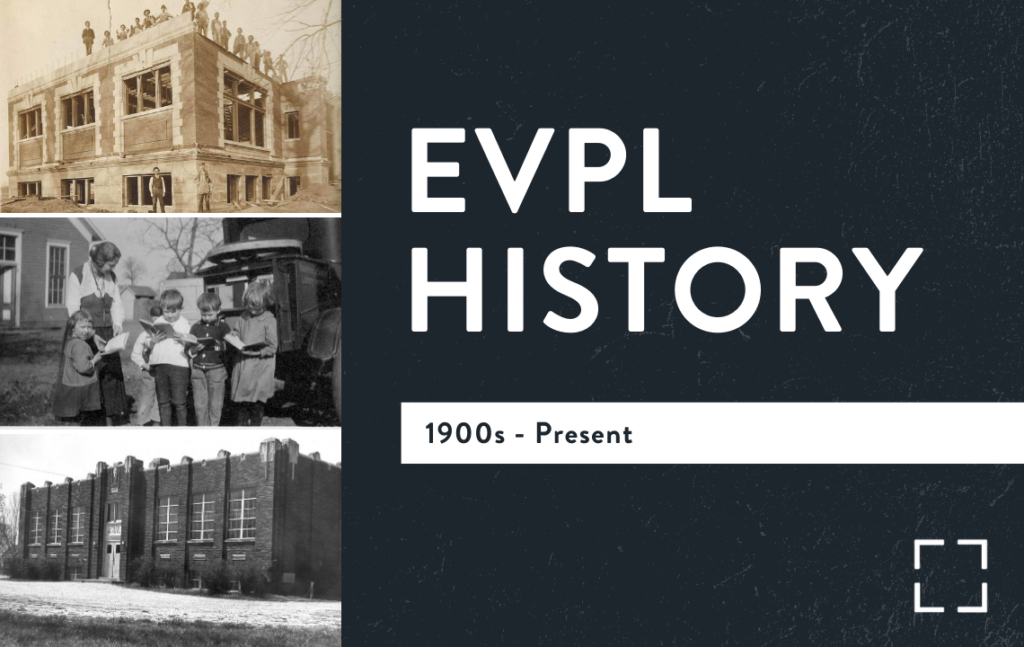Dive into the history of the Evansville Vanderburgh Public Library
1900s-1950s
In the late 19th-early 20th centuries, Evansville tried several times to have a public library meet the needs of its population, but the new Willard Library did not cover all the basics. Citizens wanted multiple branches to better serve the growing city.
By 1911, the newly formed Public Library Board of Trustees hired Ethel McCollough to be the first professional librarian in Evansville beginning on January 1, 1912. Andrew Carnegie granted the city of Evansville funds for two library buildings on the east and west sides of the city, but Ms. McCollough knew there needed to be a third building to serve the African American community. Cherry Street Library opened in 1914 with Lillian Childress Hall as Head Librarian. She was Indiana’s first African American librarian.
Aside from the three Carnegie libraries, the library system used many schools to help house its collection and make sure students had access to books. It was not until 1924, the library system felt a need to have a centrally located building. Central Library started in the old Evansville Journal newspaper building at 11 N.W. Fifth St. In May 1932 it moved to a brand new building located at 22 S.E. Fifth St. This housed Central Library until the new building was completed at its current location in 2004.
Ms. McCollough remained the backbone of the library for many years to come and made sure it continued to grow. She placed books all over the city and county by partnering with businesses and schools to have small collections. Spreading the books around led to the first bookmobile in 1923 known as Little Brother. Despite a delay from the 1937 flood, Howell Library opened that year followed by North Branch (later renamed Stringtown) in 1939. Books circulated through the war years, including Victory Book Drives to gather books for soldiers. Ms. McCollough retired in 1947, leaving the library in the hands of Arnold Rosaaen for 5 years. Mr. Rosaeen completed a large survey of the library acknowledging that libraries should have a curated collection and not keep every book possible.
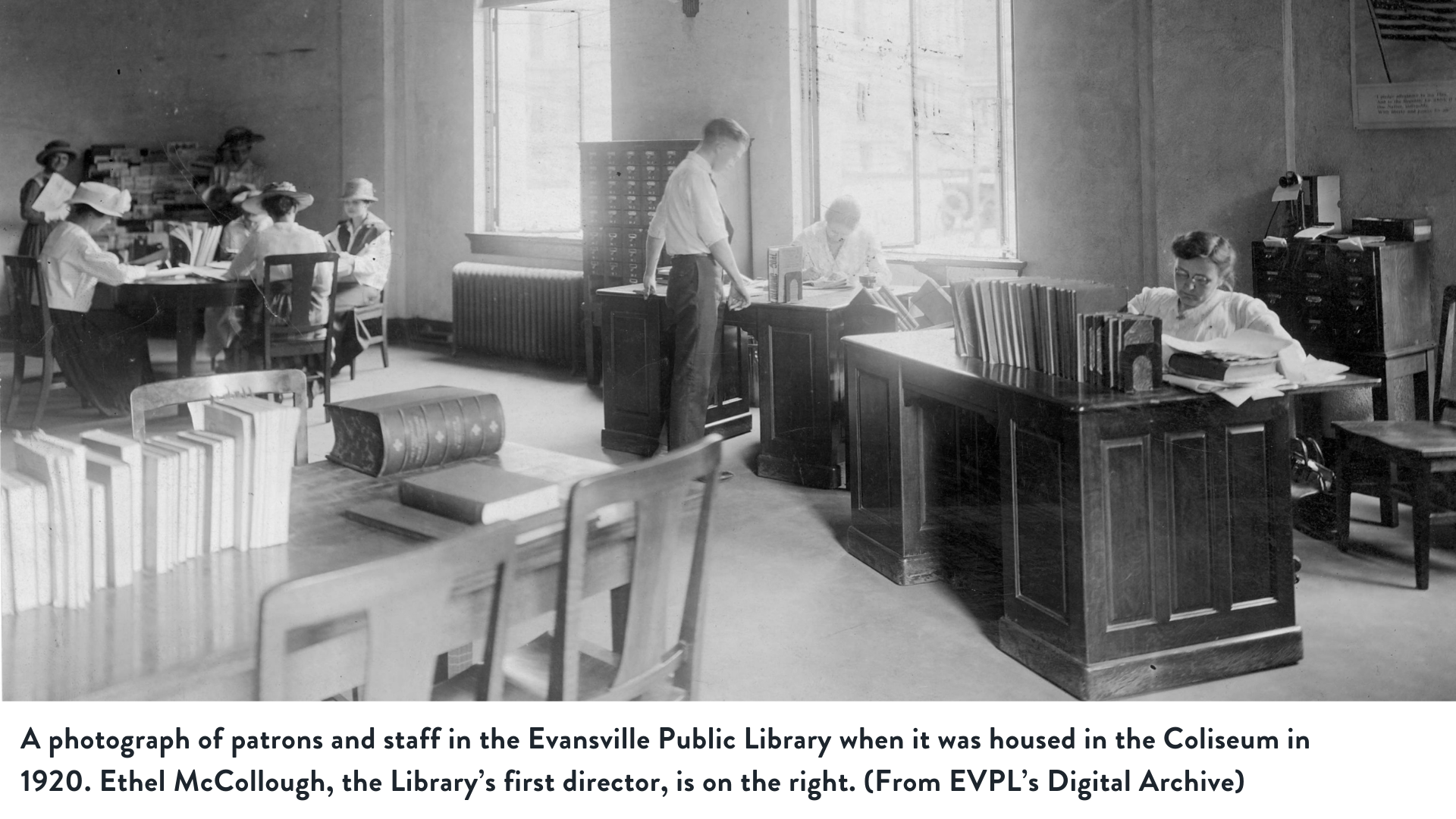 A photograph of patrons and staff in the Evansville Public Library when it was housed in the Coliseum in 1920. Ethel McCollough, the Library’s first director, is on the right. (From EVPL’s Digital Archive)
A photograph of patrons and staff in the Evansville Public Library when it was housed in the Coliseum in 1920. Ethel McCollough, the Library’s first director, is on the right. (From EVPL’s Digital Archive)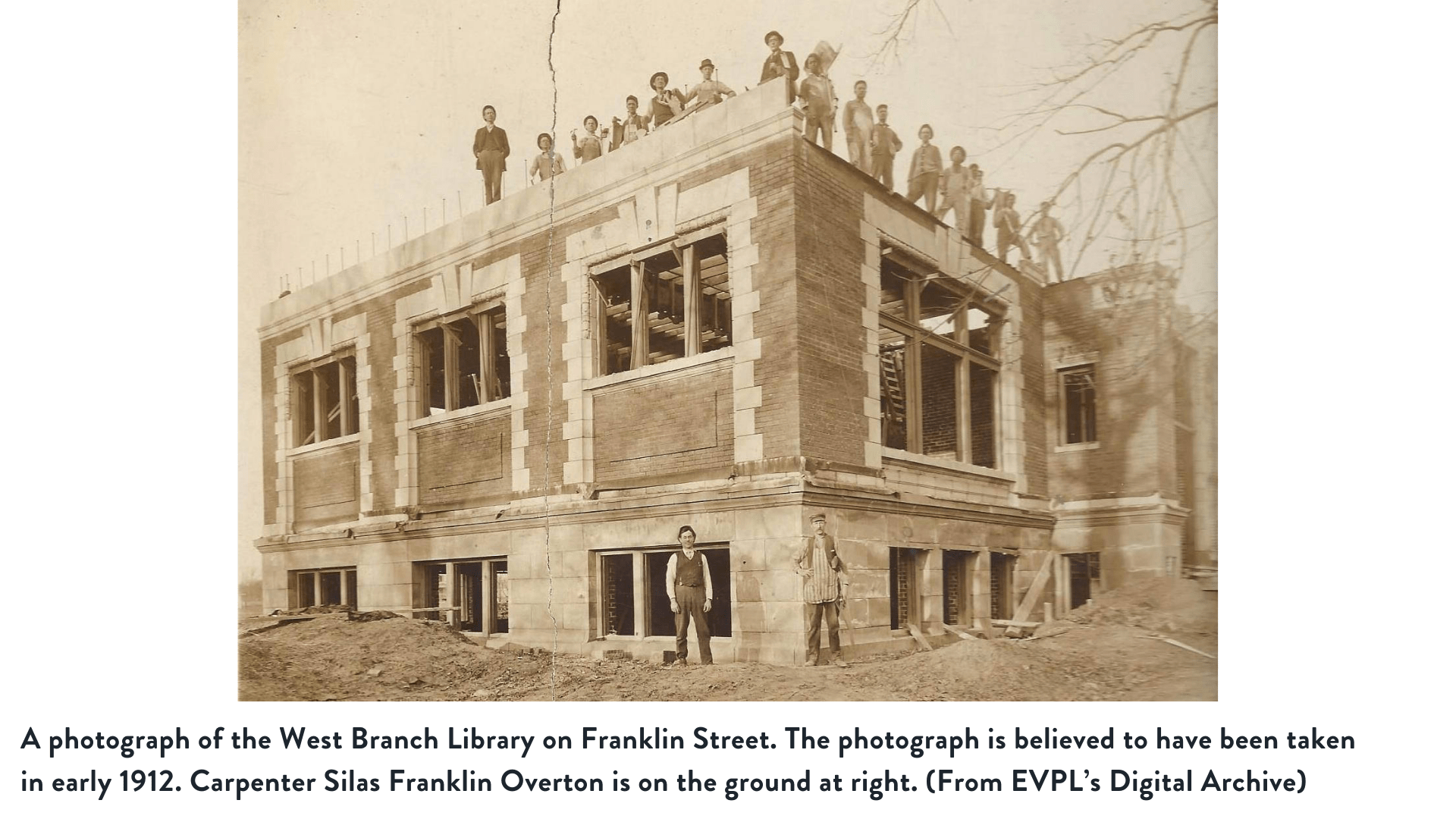 A photograph of the West Branch Library on Franklin Street. The photograph is believed to have been taken in early 1912. Carpenter Silas Franklin Overton is on the ground at right. (From EVPL’s Digital Archive)
A photograph of the West Branch Library on Franklin Street. The photograph is believed to have been taken in early 1912. Carpenter Silas Franklin Overton is on the ground at right. (From EVPL’s Digital Archive)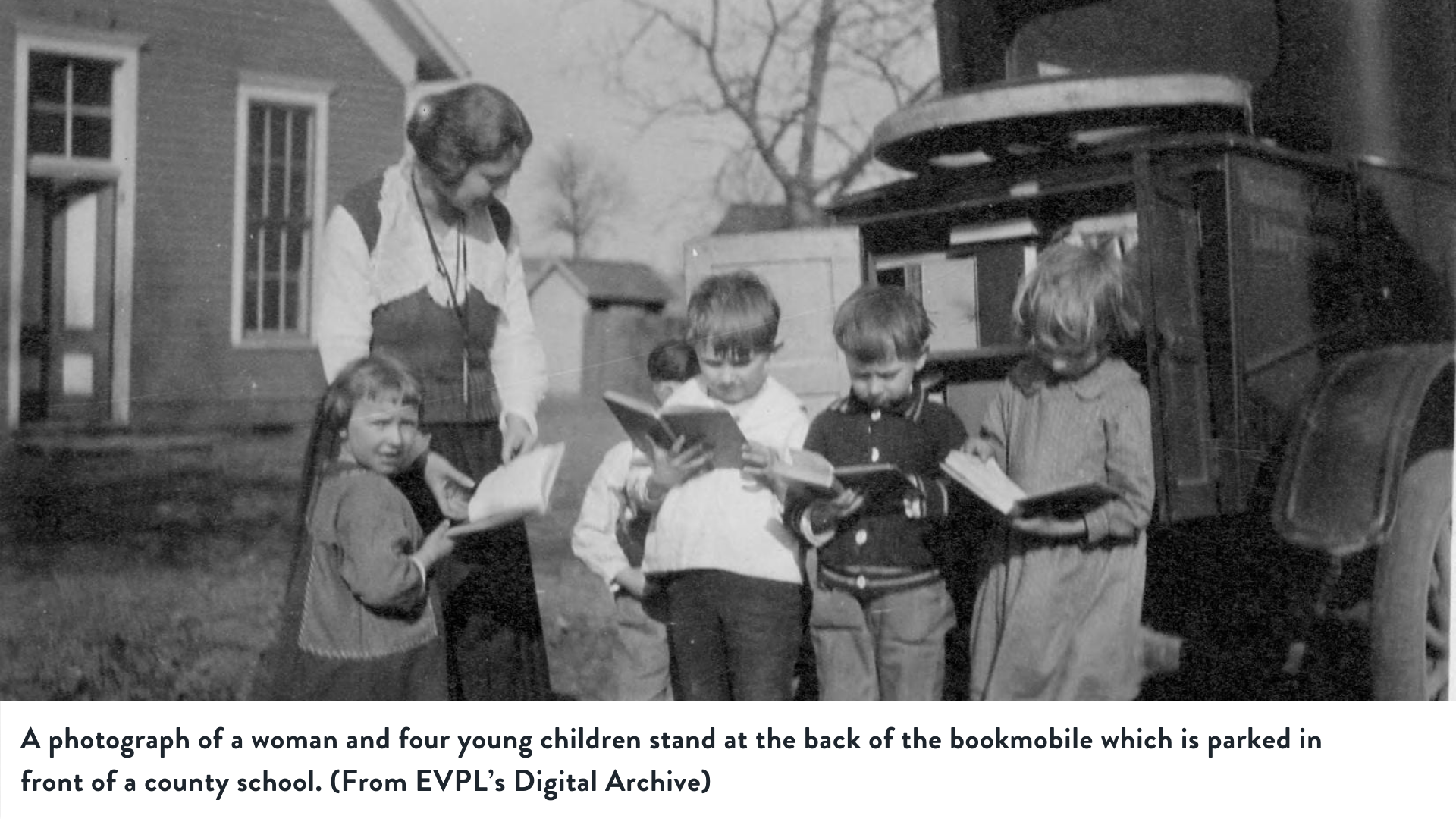 A photograph of a woman and four young children stand at the back of the bookmobile which is parked in front of a county school. (From EVPL’s Digital Archive)
A photograph of a woman and four young children stand at the back of the bookmobile which is parked in front of a county school. (From EVPL’s Digital Archive)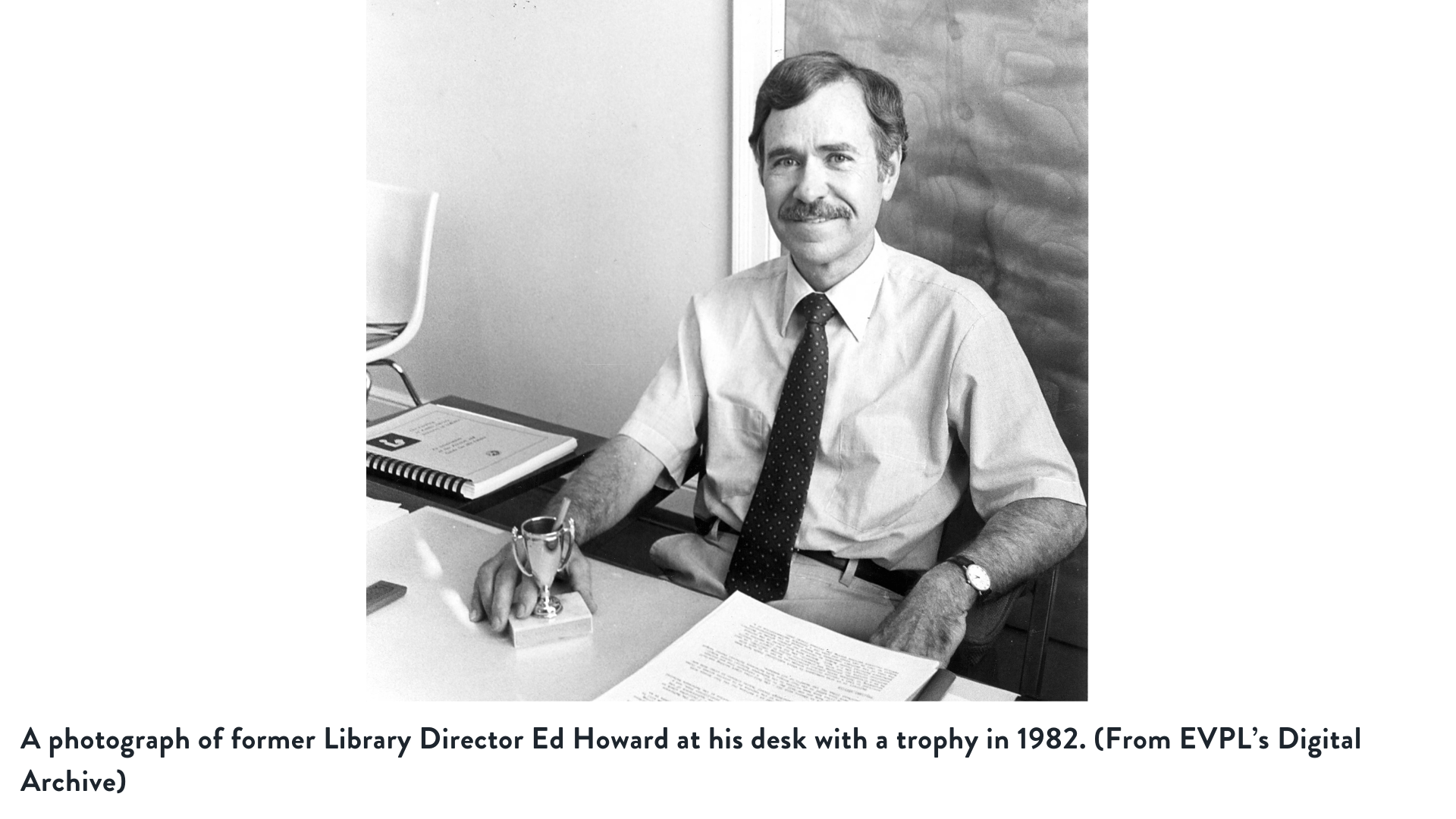 A photograph of former Library Director Ed Howard at his desk with a trophy in 1982. (From EVPL’s Digital Archive)
A photograph of former Library Director Ed Howard at his desk with a trophy in 1982. (From EVPL’s Digital Archive)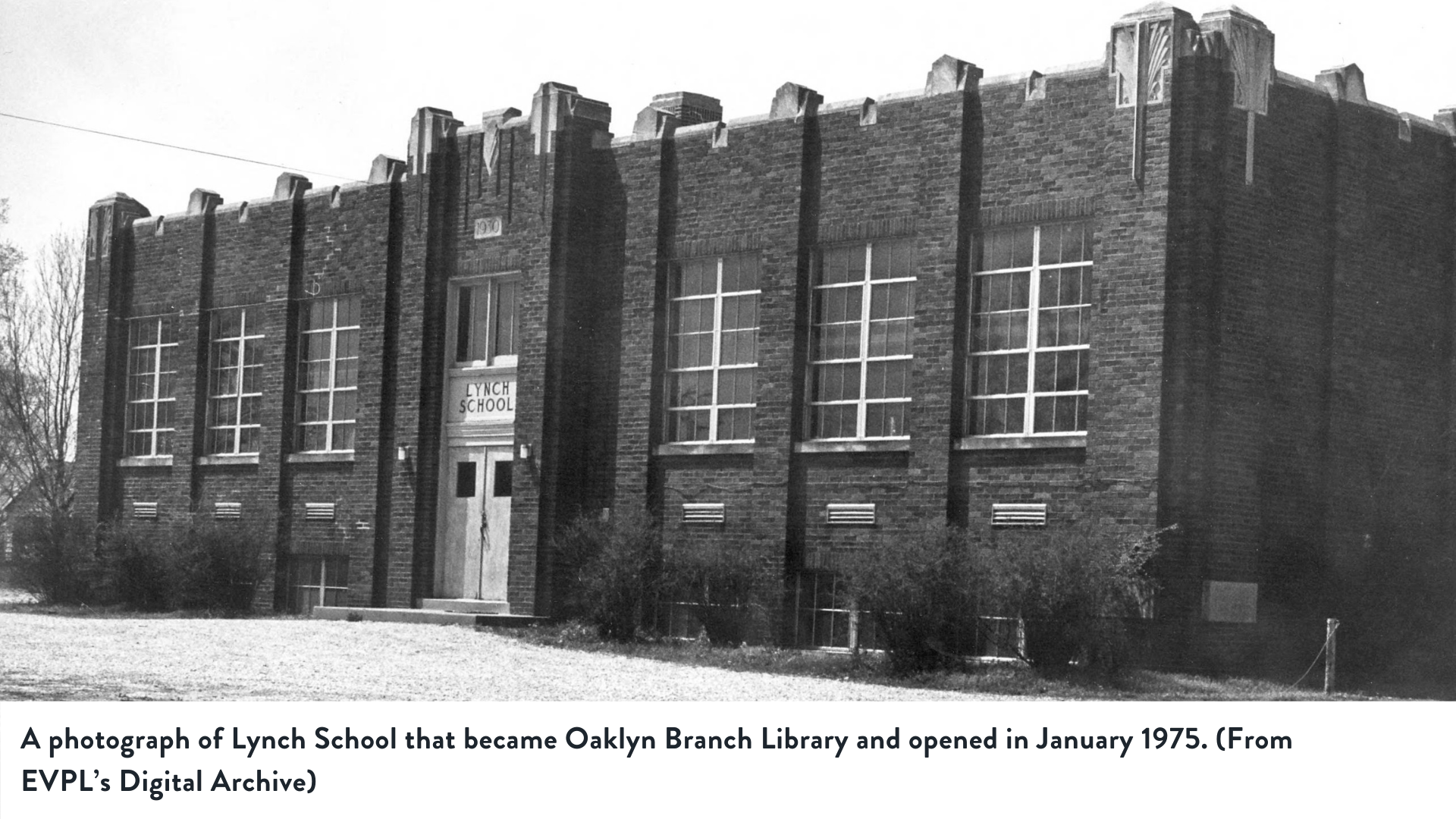 A photograph of Lynch School that became Oaklyn Branch Library and opened in January 1975. (From EVPL’s Digital Archive)
A photograph of Lynch School that became Oaklyn Branch Library and opened in January 1975. (From EVPL’s Digital Archive)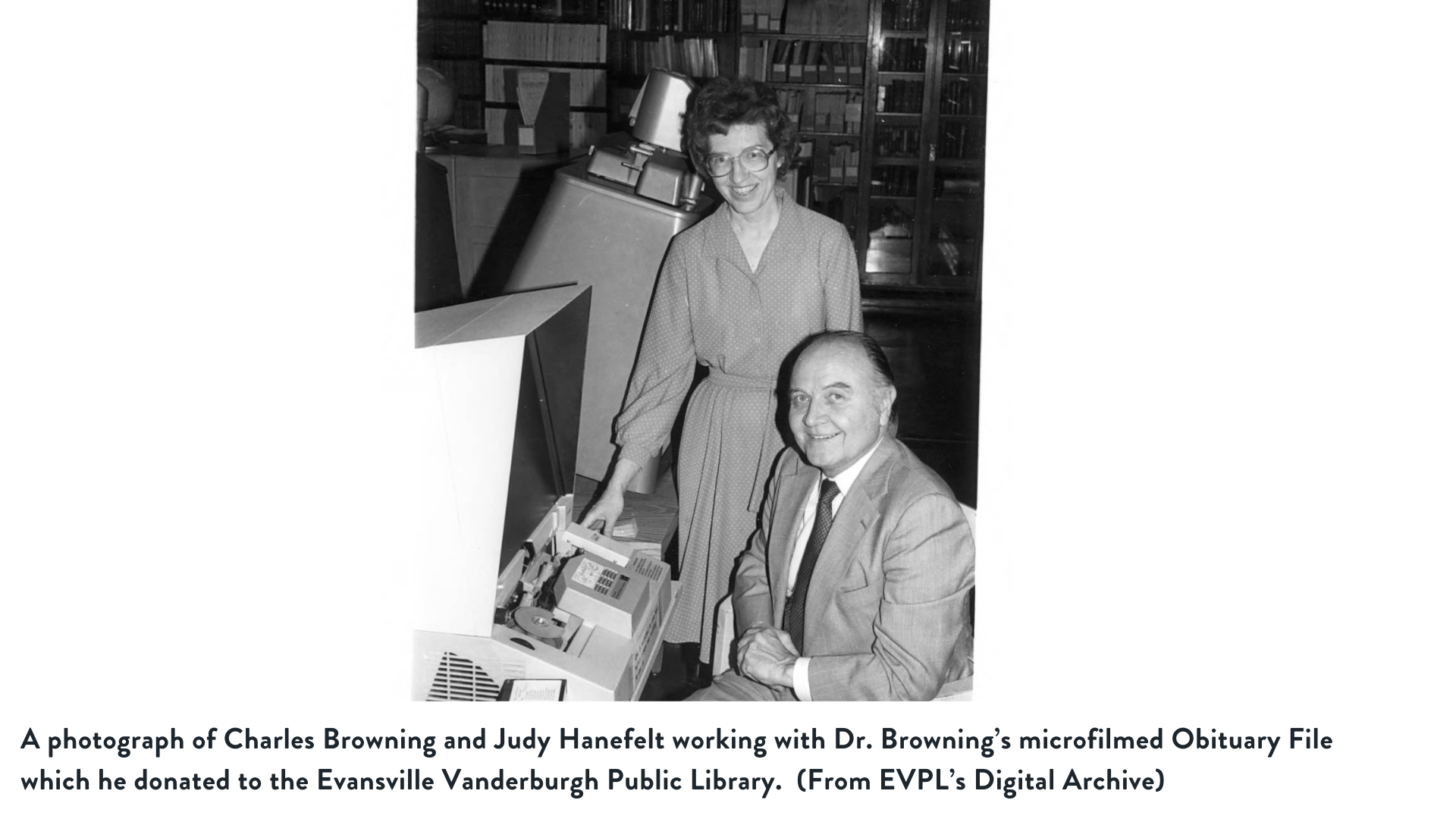 A photograph of Charles Browning and Judy Hanefelt working with Dr. Browning’s microfilmed Obituary File which he donated to the Evansville Vanderburgh Public Library. (From EVPL’s Digital Archive)
A photograph of Charles Browning and Judy Hanefelt working with Dr. Browning’s microfilmed Obituary File which he donated to the Evansville Vanderburgh Public Library. (From EVPL’s Digital Archive)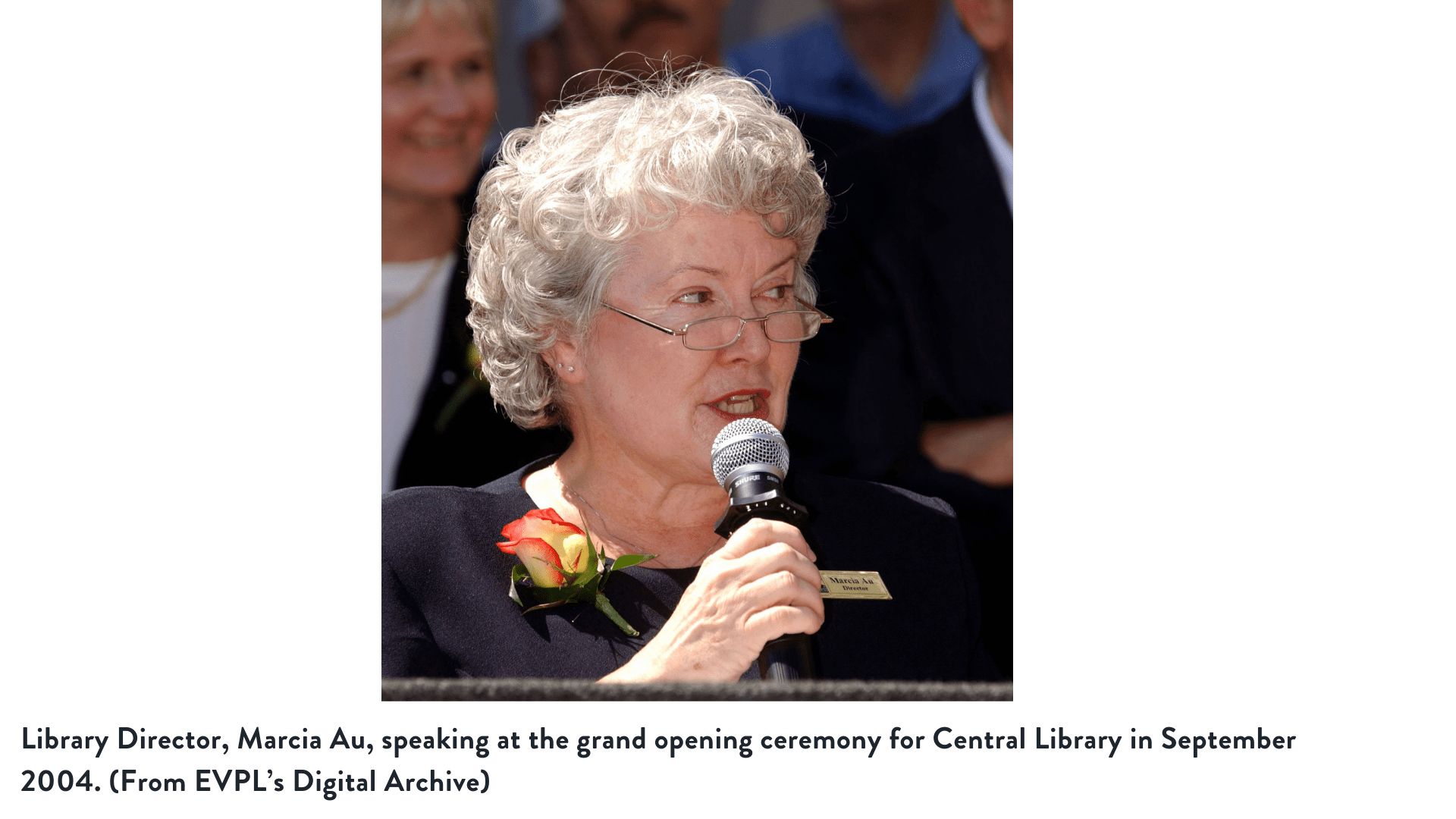 Library Director, Marcia Au, speaking at the grand opening ceremony for Central Library in September 2004. (From EVPL’s Digital Archive)
Library Director, Marcia Au, speaking at the grand opening ceremony for Central Library in September 2004. (From EVPL’s Digital Archive)
1960s-1990s
Major changes happened in the 1960s. EVPL’s third director, Herbert Goldhor, transferred to another library in 1961, and Edward Howard became director and remained for 33 years. The 1964 Elementary and Secondary Education Act allowed schools to receive money for books leading the way for school libraries. This Act gave EVPL the ability to move into the farther sides of the city with two new branches: McCollough and Meadow Park (later known as North Park). The library also started purchasing paperback books and 8mm films. Interlibrary Loan (borrowing materials from outside Evansville) started in 1965.
The library continued to change with the times as catalogers moved to computer systems in 1976. Oaklyn branch opened in 1975 inside the old Lynch School building. EVPL became the southern hub for Indiana State Library’s Talking Books in 1977. The Vanderburgh County Public Library and Evansville Public Library formally merged in 1981 to become EVCPL (Evansville Vanderburgh County Public Library). Computers continued to change the library with the card catalog going digital in 1986, followed by barcoded library cards in 1987.
Charles Browning, a local funeral homeowner, took on the daunting task of gathering and indexing Evansville obituaries from 1940 up to the present time on index cards and microfilm. Those records have been digitized and are now a regularly used database. The Friends of the Library started the annual book sale that grew from the yard of McCollough to Washington Square Mall. Red Bank Branch opened in 1991, serving the west side followed by Howell Library closing in 1992.
1990s-2010s
Beginning in 1995, under the direction of Marcia Learned Au, EVPL expanded and updated into the 21st century. Three libraries received new buildings: Central in 2004, Oaklyn in 2003, and North Park in 2005. The new space at Central Library allowed it to house part of the Survivors of the Shoah Collection within the Indiana Room. More public service computers were added to all branches and technological services were updated through the years, including the introduction of public wifi capabilities in 2004. Books came in new formats of CD or Playaway (a portable mp3 player), and eventually some streaming services and apps. The bookmobile continued to take books around the city until 2018.
2010s-Present
A new logo in 2018, presented the idea of the library as a place to spark creativity and fulfill curiosity. EVPL strives to support its community and patrons through its various materials, services, and programs. With COVID-19, the library adjusted to bring more materials via streaming services and digital programming. New services like the Maker Space and Preservation Studio allow EVPL to evolve with the needs of its community and its users.
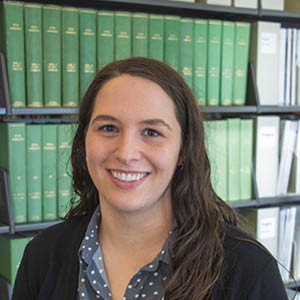
Shannon G.
With 8 locations throughout Vanderburgh County, EVPL is ready to discover, explore, and connect WITH you! We encourage you to uncover new things, revisit old favorites, and to engage with us along the way.
200 SE Martin Luther King Jr. Blvd
Evansville, Indiana 47713
Administration: ceo@evpl.org
Card & Account: circulation@evpl.org
Feedback & Ideas: marketing@evpl.org


